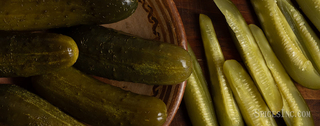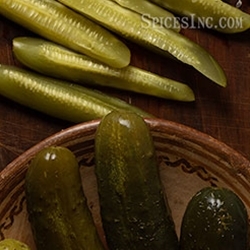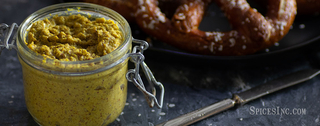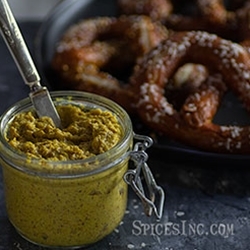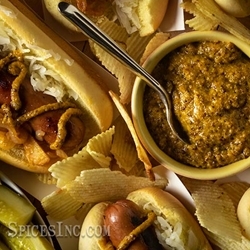Yellow Mustard Seeds
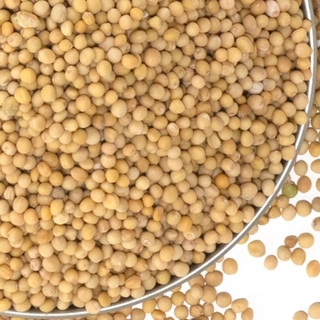
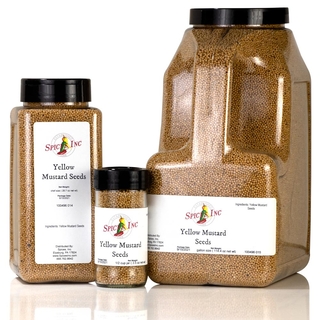


Yellow Mustard Seeds
Yellow Mustard Seeds, Brassica alba, are frequently referred to as white mustard seeds, mustard seed, bulk mustard seed, mustard seed wholesale, or mustard seed yellow. They have a volatile oil concentration of less than 0.2% overall.
There are more than 40 varieties of mustard plants, but culinary mustard only comes from yellow (or white), brown, and black mustard seed varieties. Yellow mustard seeds are the most popular seed and the most widely used. They are indigenous to western Asia and southern Europe, and are slightly larger than the other types of mustard. As is standard in mustard varietals, they do not have much aroma or flavor until they are ground or roasted.
Our Yellow Mustard Seeds are popular with:
- brewpubs and gastropubs;
- American restaurants;
- manufacturers of ferments and pickles, gourmet condiments, and sauces; and
- seasoning companies
Flavor Profile
Whole Yellow Mustard Seeds don't have much taste or aroma until they are bitten into or ground. Once they are ground, mustard seeds are pungent, sharp, and earthy.
How To Use
Ground and whole mustard seed is popular in sauces like Hollandaise, in dressings, and works well with mayonnaise. Use in homemade Ketchup or in a classic German Style Mustard or Porter Beer Mustard. Whole seeds are a standard addition to a pickling mix, so make yourself some Crunchy Pickles. Stir some into your favorite barbecue sauce recipe, or elevate your sauce and stir yellow mustard into Cherry Balsamic Barbecue Sauce.
Yellow Mustard Seed is complemented by strong flavors like grilled and roasted beef, cabbage, strong cheeses, chicken, curries, dals, fish, and seafood, cold meats, rabbit, sausages and barbecue rubs. It is often used in Caribbean cuisines in a sauce to accent fruit. We love using Yellow Mustard Seed in deviled eggs, ham, cheese, pork and bean dishes, in cocktail sauce, and in soups or chowders.
Mustard Seed pairs well with bay, chili, coriander, cumin, dill, fennel, fenugreek, garlic, honey, nigella, parsley, pepper, tarragon and turmeric.
Mustard seeds can be substituted for one another, so you can use the brown mustard seeds in place of the yellow quite easily at a 1:1 ratio. Just keep in mind that the darker the mustard seed, the more spice it will have, so be sure to taste as you are seasoning.
| Also Called | White mustard seeds, mustard seed, or mustard seed yellow |
| Species | Brassica alba |
| Ingredients | Yellow mustard seed |
| Flavor Profile | Mellow until ground, then pungent, earthy, and bold |
| Oil content | >0.2% |
| Recommended Uses | Sauces, homemade mustard and ketchup, pickles, slaw, DIY curry blends |
| Cuisine | American, Caribbean, Indian |
| How To Store | Airtight container in a cool, dark place |
| Shelf Life | 1-2 Years |
| Country of Origin | USA or Canada |
Nutrition Facts
Serving Size1 tsp
Amount Per Serving
Calories20
% Daily Value*
Total Fat1g2%
Saturated Fat0g0%
Trans Fat0g
Polyunsaturated Fat0g
Monounsaturated Fat0g
Cholesterol0mg3%
Sodium0.3mg0%
Total Carbohydrate1.3g0%
Dietary Fiber1.1g4%
Total Sugars0.2g
Added Sugars0g0%
Sugar Alcohol0.0g
Protein1.3g2%
Vitamin D0mcg0%
Calcium16mg1%
Iron0mg2%
Potassium32mg1%
*The % Daily Value (DV) tells you how much a nutrient in a serving of food contributes to a daily diet. 2,000 calories a day is used for general nutrition advice. These values were calculated and therefore are approximate. For more accuracy, testing is advised.

